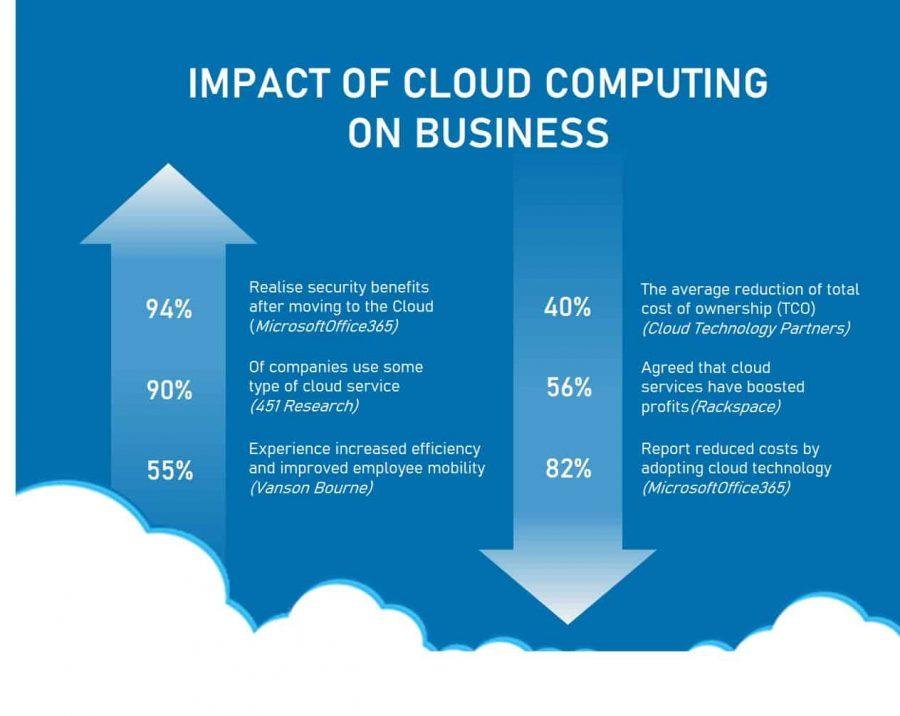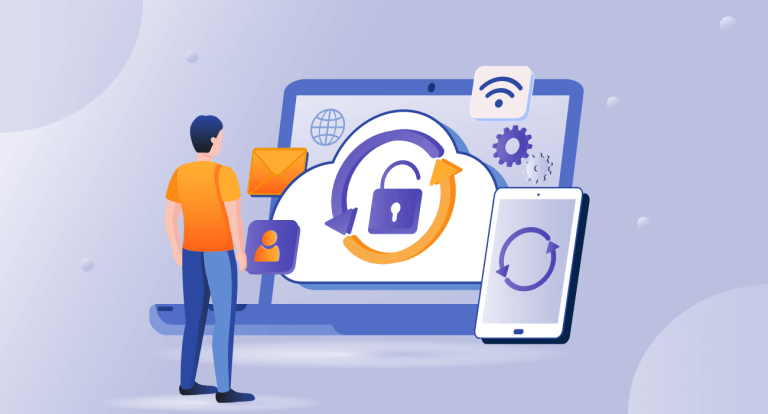In the last decade, cloud computing has become a significant part of the technological landscape. It allows users to access different types of software and data remotely and share them with other people. Many businesses use cloud computing because it allows them to store their data on remote servers instead of local computers.
Cloud computing has also created new opportunities for individuals and organizations that want to create their own applications using third-party services such as Google's App Engine or Heroku (R). In addition, the use of cloud computing has changed how we access information online, and thanks to cloud computing security, we are safer online than ever before.
This article explores how cloud computing has affected Internet technology over the past years. It begins by defining what cloud computing is and how it works. It then explores its impact on Internet technology from an individual perspective as well as from a business perspective.
What Is Cloud Computing?
Cloud computing is a way of storing, accessing, and sharing data via an online network. A cloud is a network of computers that stores information remotely to be accessed anywhere with an Internet connection.
Cloud computing allows people to access data from any location without needing to download software onto their devices or upload data onto their computers. It also means that users do not need to worry about backups because everything is automatically backed up for them by default.
Most people use cloud computing to store files, programs, and other information, but it can also be used for emails, word processing, blockchain, teleprompter software, edge computing, etc. In fact, we all are familiar with the benefits of blockchain in cloud computing.
How Does Cloud Computing Work?
Cloud computing can work in a few different ways depending on what kind of service you use:
- Software as a Service (SaaS) – With SaaS, the application exists offsite but is accessible through the internet. This type of cloud computing is often used for productivity applications like Google Docs and Salesforce.com.
- Platform as a Service (PaaS) – PaaS is similar to SaaS, but it allows users to build and deploy their applications on a cloud platform hosted by the provider.
- Infrastructure as a Service (IaaS) – IaaS provides users raw resources like storage capacity and processing power without installing an operating system or software on their hardware.
Impact of Cloud Computing on Society
With the advent of cloud computing, we have changed how we use the Internet. It has transformed how we do business and made it possible for individuals to access information and services in unimaginable ways.
From an individual perspective, cloud computing allows users to access and use software and data over the internet instead of installing physical machines on their computers. You can use the cloud to store your photos and videos to view them anytime you want. You can also share your photos on popular sites like Facebook or Twitter.
Employees or freelancers can work from home or a coffee shop; they can create promotional videos, send emails, create their reports or even manage the company's firewall. It doesn't matter where you are physically located, so long as you have a connection to the Internet. Cloud computing is also making it possible for more people than ever before to collaborate on projects remotely. This is something that would have been impossible just a few years ago.
Impact of Cloud Computing on Business
From a business perspective, cloud computing is having an even more significant impact than it does on individuals. It allows large and small businesses to access their files anywhere at any time without investing in expensive hardware or software. Cloud computing also makes it possible for companies to scale up quickly without having to worry about maintaining their servers or hiring additional employees—this helps them become more efficient while saving money at the same time.
In cloud computing, services are paid for as they are used. As resources are acquired only when needed and charged based on usage, cloud computing helps businesses cut costs.

Cloud computing also provides a lot of flexibility. Depending on which services a customer wants, they pay-per-use basis. In addition, users have the option of switching between clouds. Security requirements and other factors contribute to deciding whether to use public, private, or hybrid storage.
Impact Of Cloud Computing On the Workforce
Cloud computing is changing the way we use information technology. It takes a business to a new level of productivity by making available computing resources on demand through the Internet.
Cloud computing can significantly reduce labor and maintenance costs since the company does not have to purchase or maintain the infrastructure. Computer hardware is owned by the vendor and stored in off-site locations, so the need for staff is reduced.
Cloud computing can also deliver important benefits to the workforce, including optimization and scalability of IT resources; lower costs through the use of digitized business processes; support for a dynamic workforce by providing convenience and flexibility in enabling anytime/anywhere access to information, applications, and services; and; more effective use and adoption of technology that increases productivity and performance.
Another Key Benefit of Cloud Computing
Improved Security: Most of us have had our identities stolen at least once in our lives. With cloud computing, you don't have to worry about someone getting into your laptop or smartphone and stealing all of your sensitive information—the cloud provider takes care of security for you.
High Availability: Cloud computing provides high availability and disaster recovery services through virtualization, which allows applications to be easily moved between different physical locations. This makes it easy to keep systems running smoothly even when there is an outage in one area, ensuring that users don't experience any downtime.
Storage Capability: Cloud storage allows you to store all your files in one place and then access them from any device with an internet connection. This means you never have to worry about losing critical documents because they are stored on a physical hard drive!
Save money: Cloud computing lets you rent servers from someone else instead of buying them yourself. You also don't have to pay for maintenance or software updates when using this technology.
The Challenges of Using Cloud Computing
Data Privacy and Security
As businesses continue to adopt cloud-based services, the question of managing security for those applications rises. Data lifecycle management becomes a critical issue when distributed across multiple servers. Without its proper implementation, it becomes difficult to identify and contain cybersecurity breaches.
With cloud computing, companies can deploy and scale up their infrastructure as needed. This flexibility helps companies reduce overhead costs associated with maintaining physical structures, but it also creates new security issues. In addition, as more data moves into cloud environments and becomes more accessible, it becomes increasingly difficult to protect it.
Multi-Cloud Environments
Cloud computing is considered the most suitable and efficient way to handle the constantly growing demand for data in the business industry. However, the drawback of cloud computing is that it enables multi-cloud environments. Many companies have adopted cloud computing to save time and money in terms of infrastructure management.
Most companies have already invested millions of dollars in a single cloud provider, and now switching to another provider will incur additional costs. It may affect their business performance and lead to disruption in operations because there are differences between different cloud providers in terms of pricing policies, security measures, monthly fees, etc.
On top of that, different clouds offer different features or services with which they can provide customized features according to their specific needs.
High Reliance on the Network
In order for cloud computing to work effectively, there are many different elements that have to be in place. One of them is having a highly advanced and reliable network infrastructure.
A significant amount of data is transferred to and from servers in cloud computing due to its real-time resource provisioning. This is only possible with a high-speed network.
In cases of limited bandwidth or an outage, this data and resources can be extremely vulnerable. The Internet bandwidth must be adequate, and there should be no network outages, even if enterprises reduce their hardware costs. Thus, maintaining network bandwidth at a high cost poses a significant challenge for smaller businesses.
The Future of Cloud Computing
Cloud computing is moving forward. The industry is expanding and changing, and we've only just begun to see the impact of cloud computing on internet technology.
The future of cloud computing looks bright, with more businesses adopting the model daily. The benefits of cloud computing are numerous: increased efficiency, reduced costs, the better quality of service, and more.
Cloud computing has already had an enormous impact on internet technology, but it's not over yet! As we move into the next decade, we expect to see even more innovation in this industry. This is because it continues to grow and change in response to consumer demand.















Leave a Reply